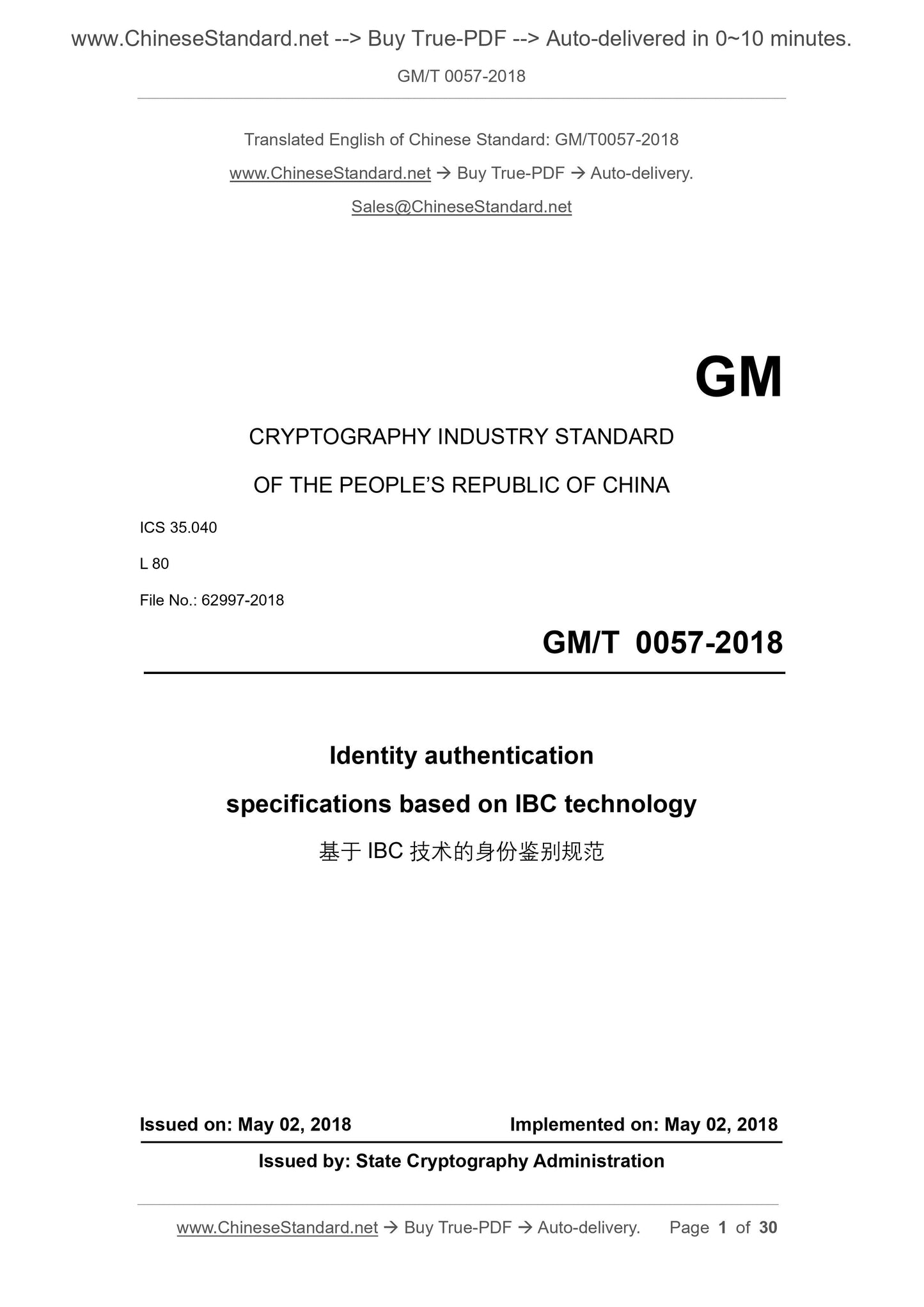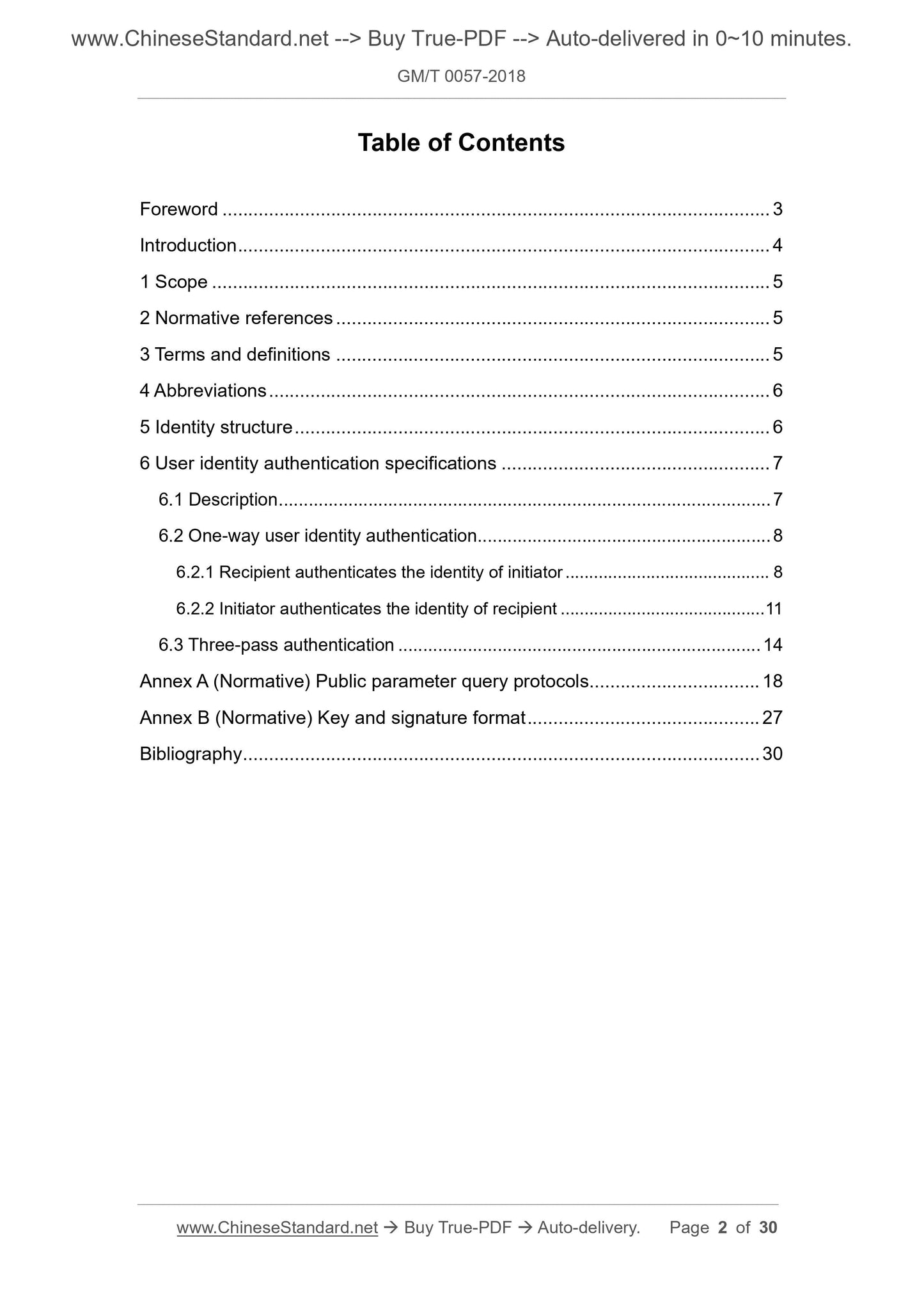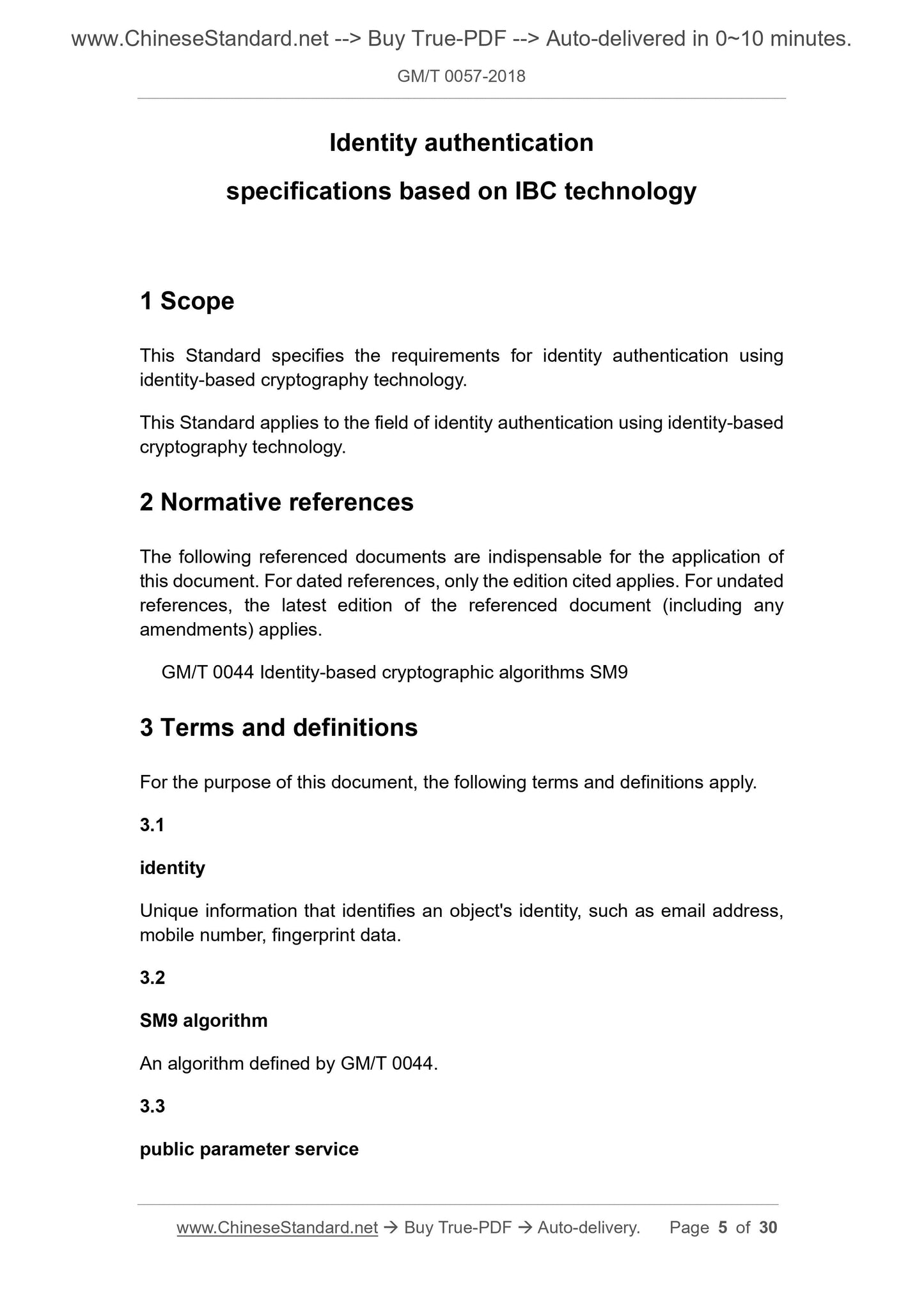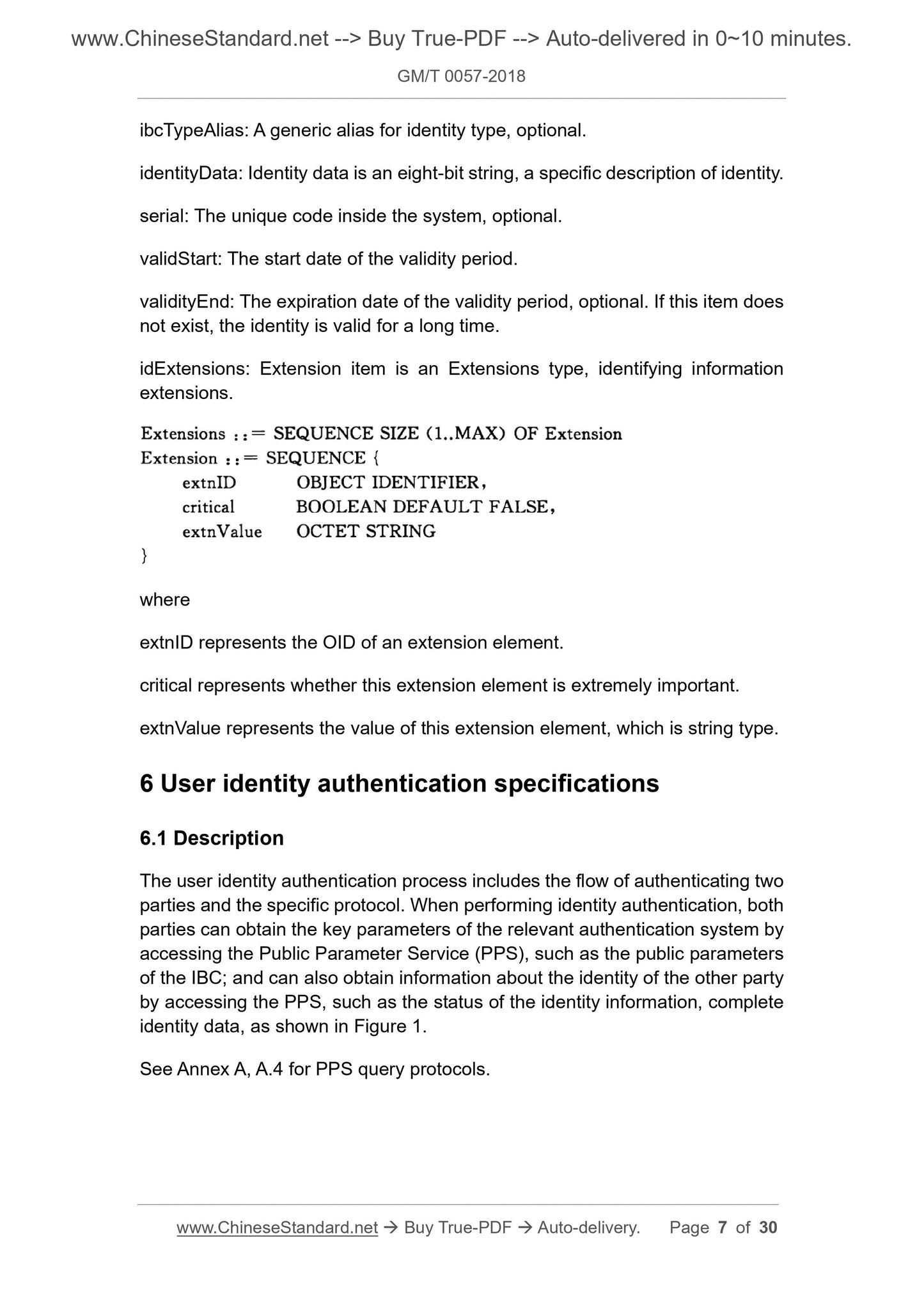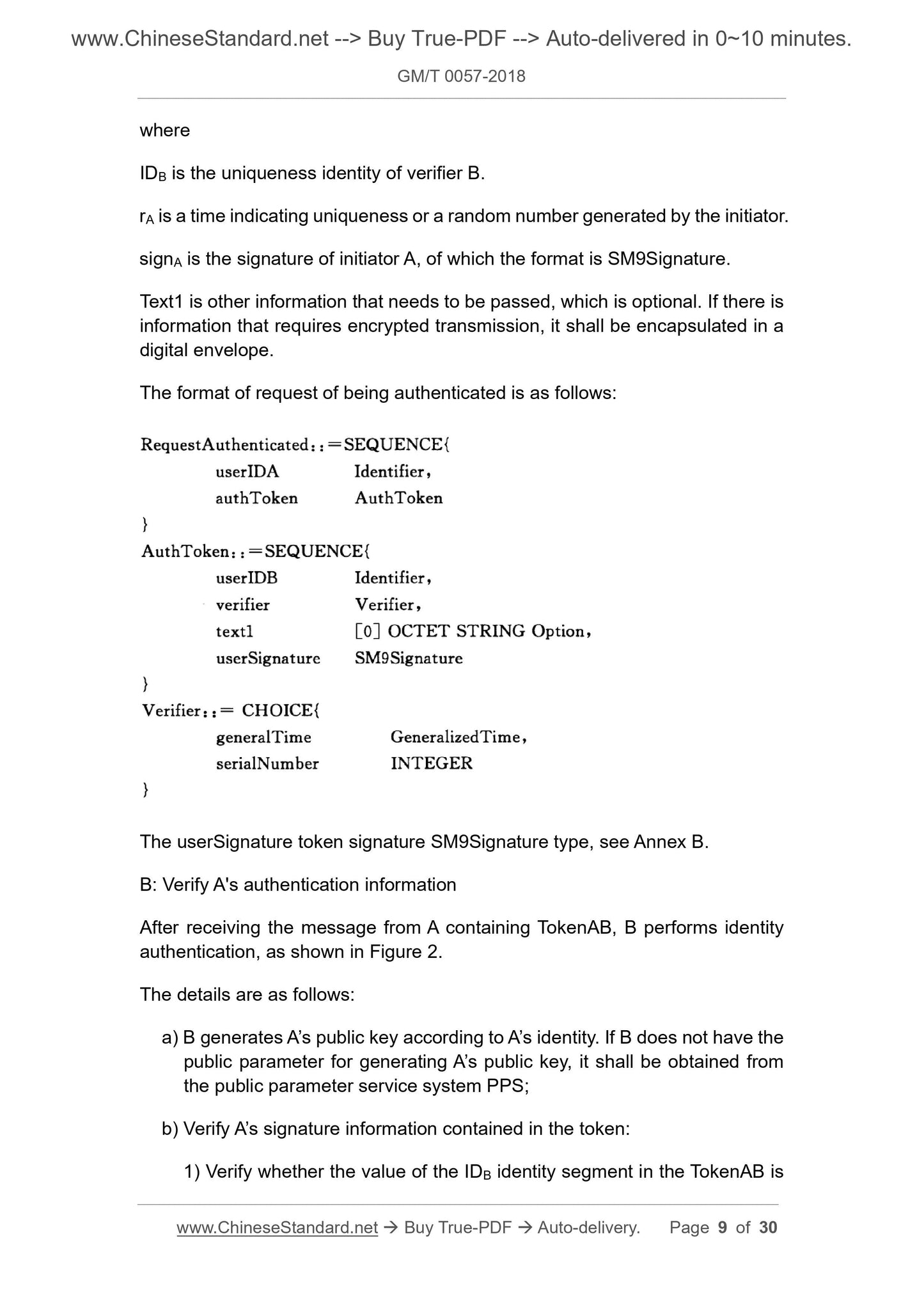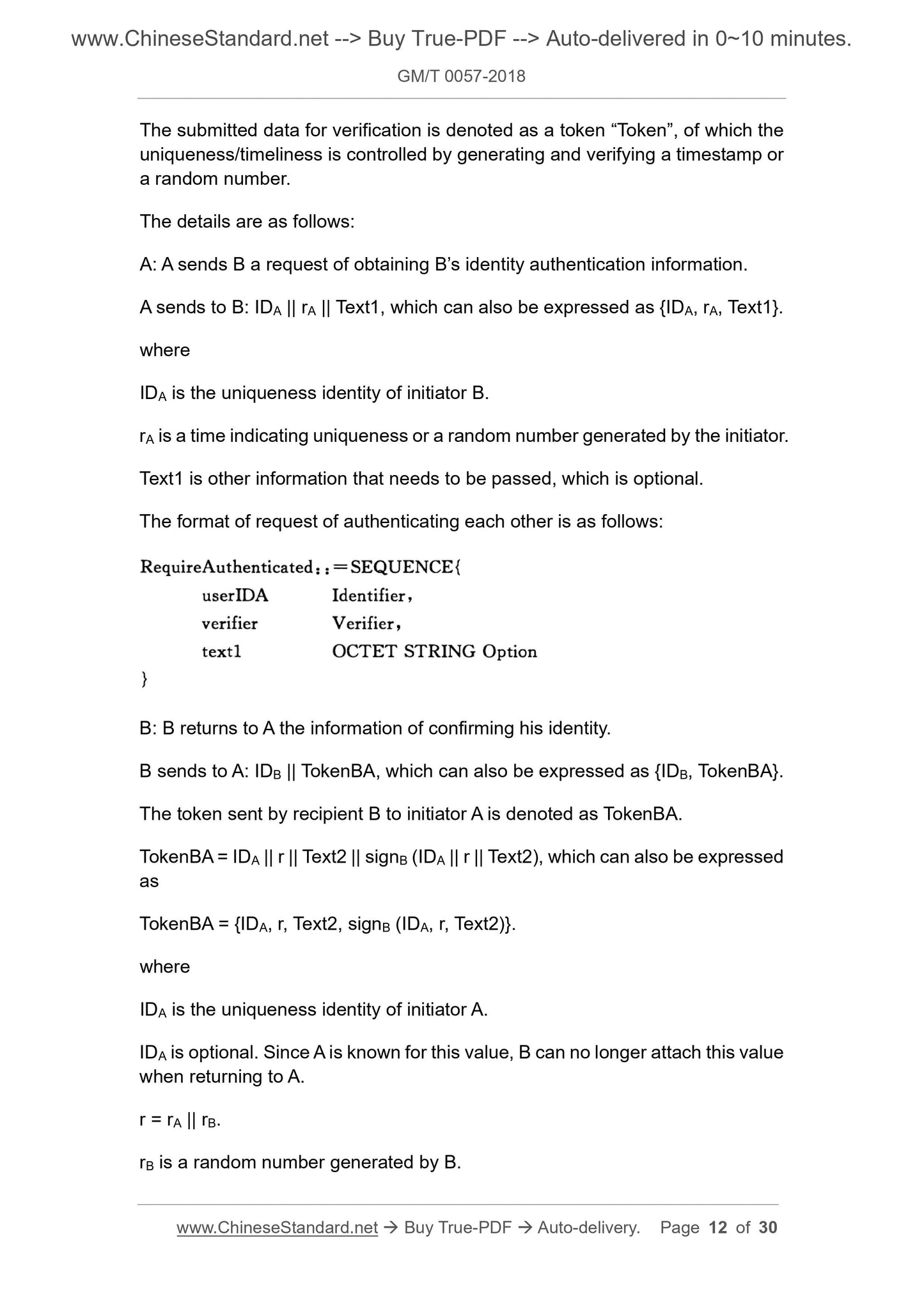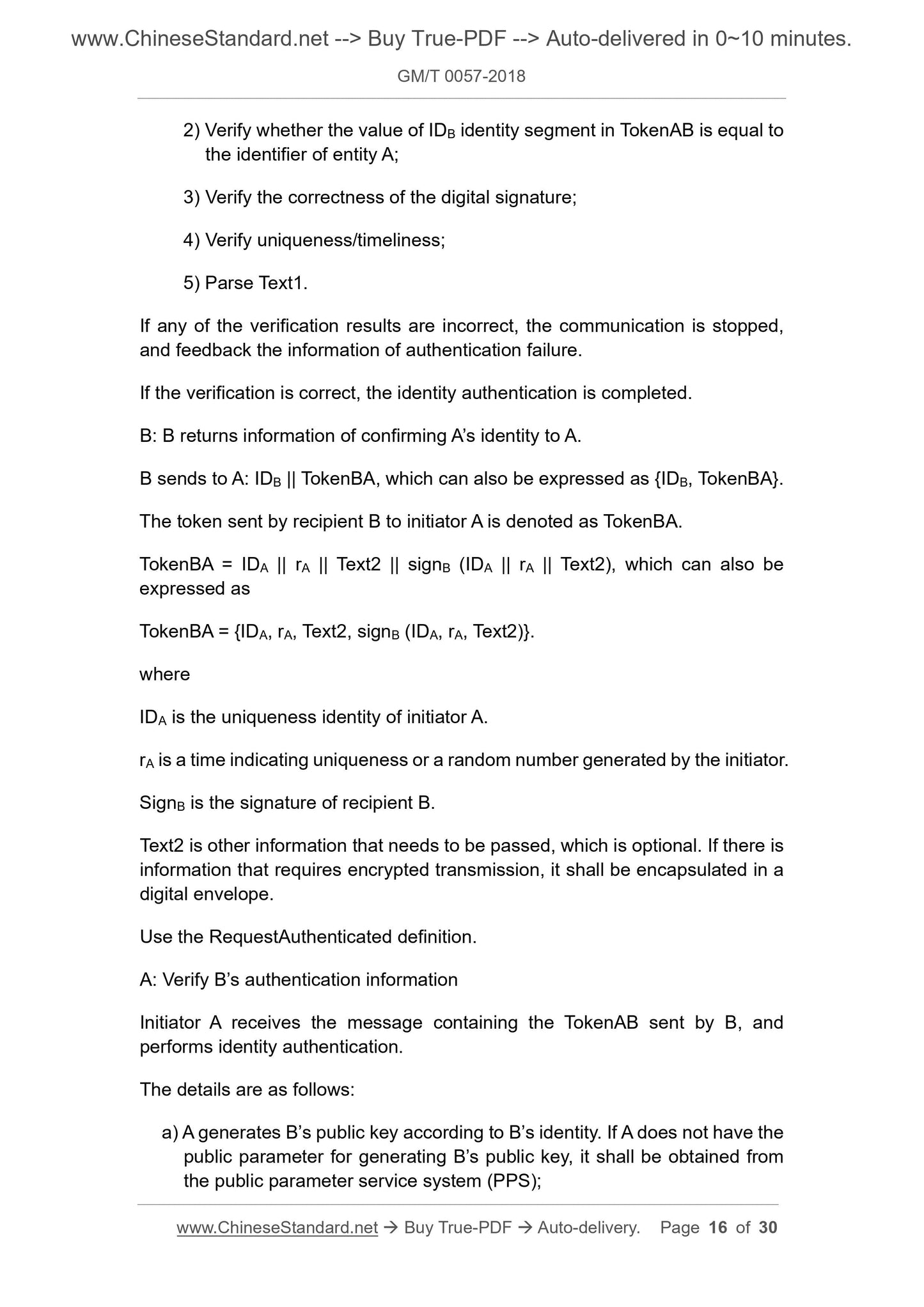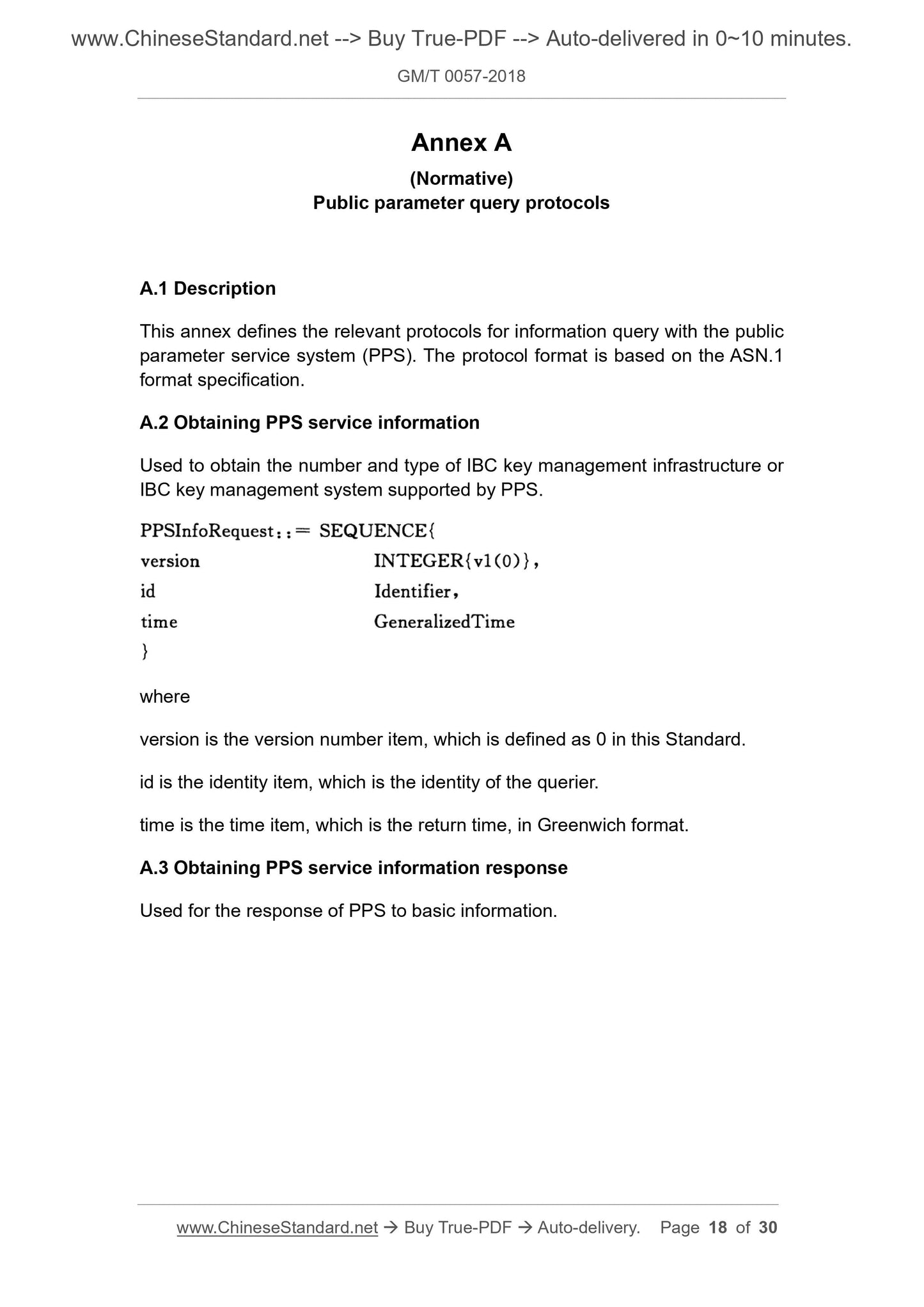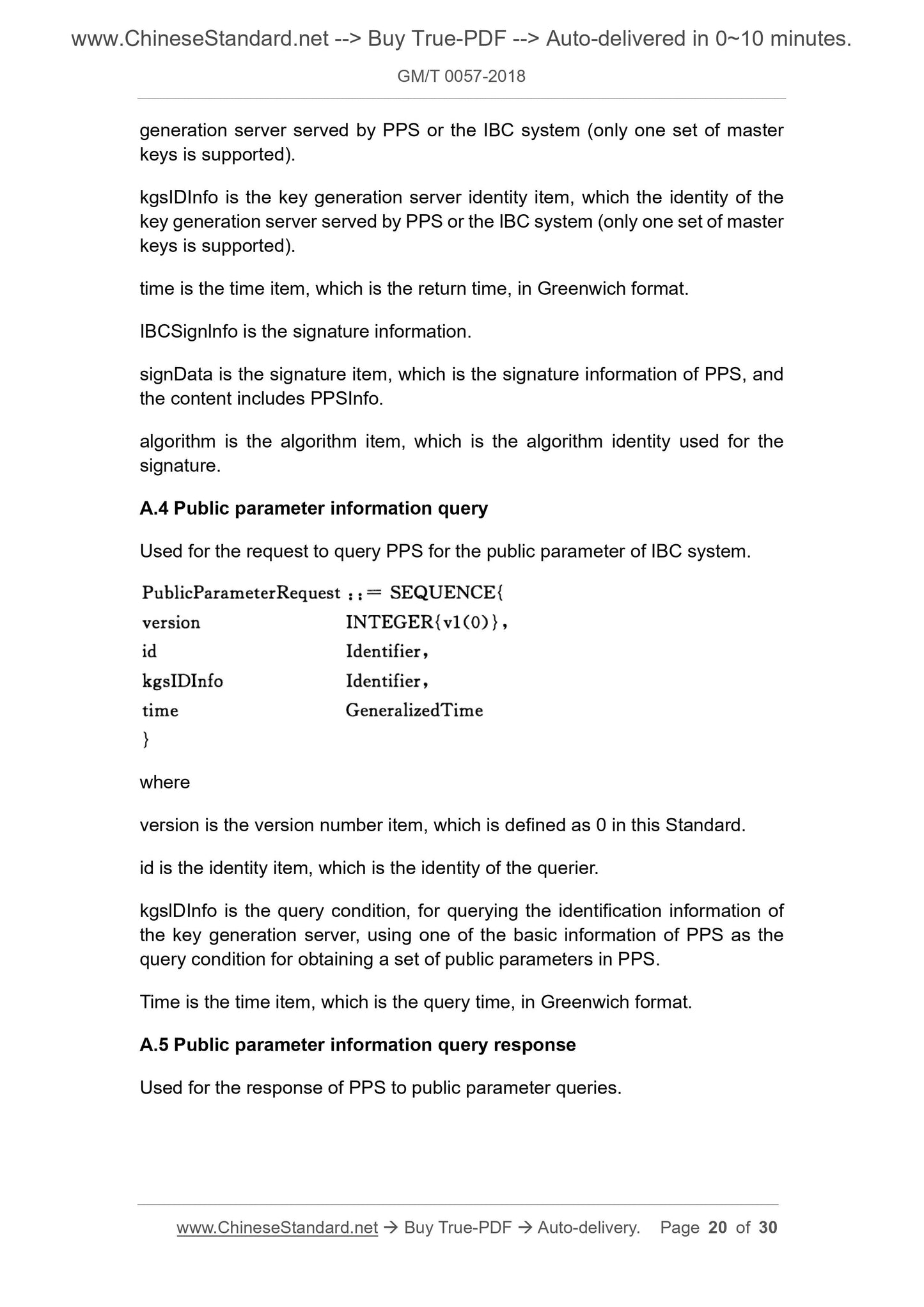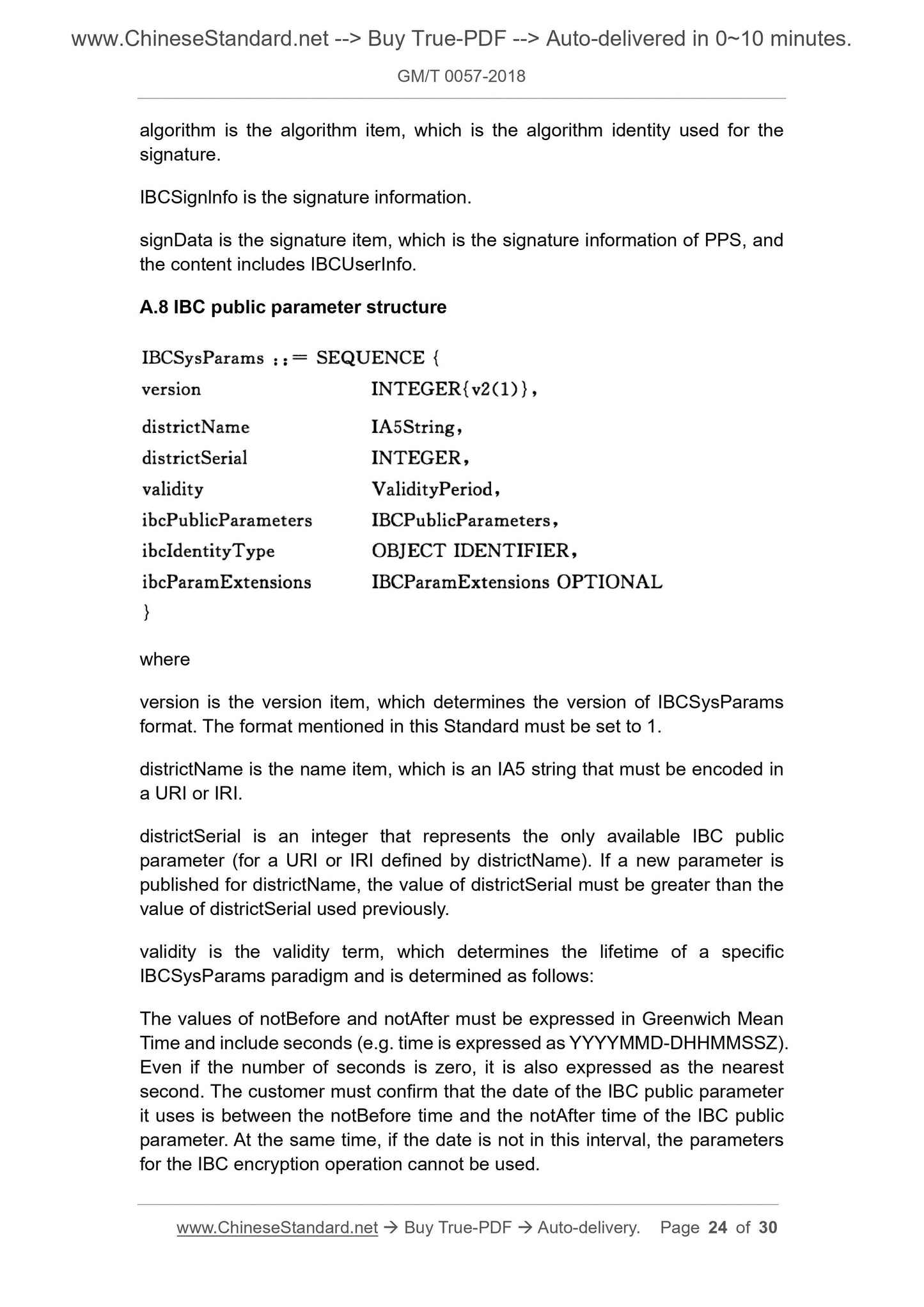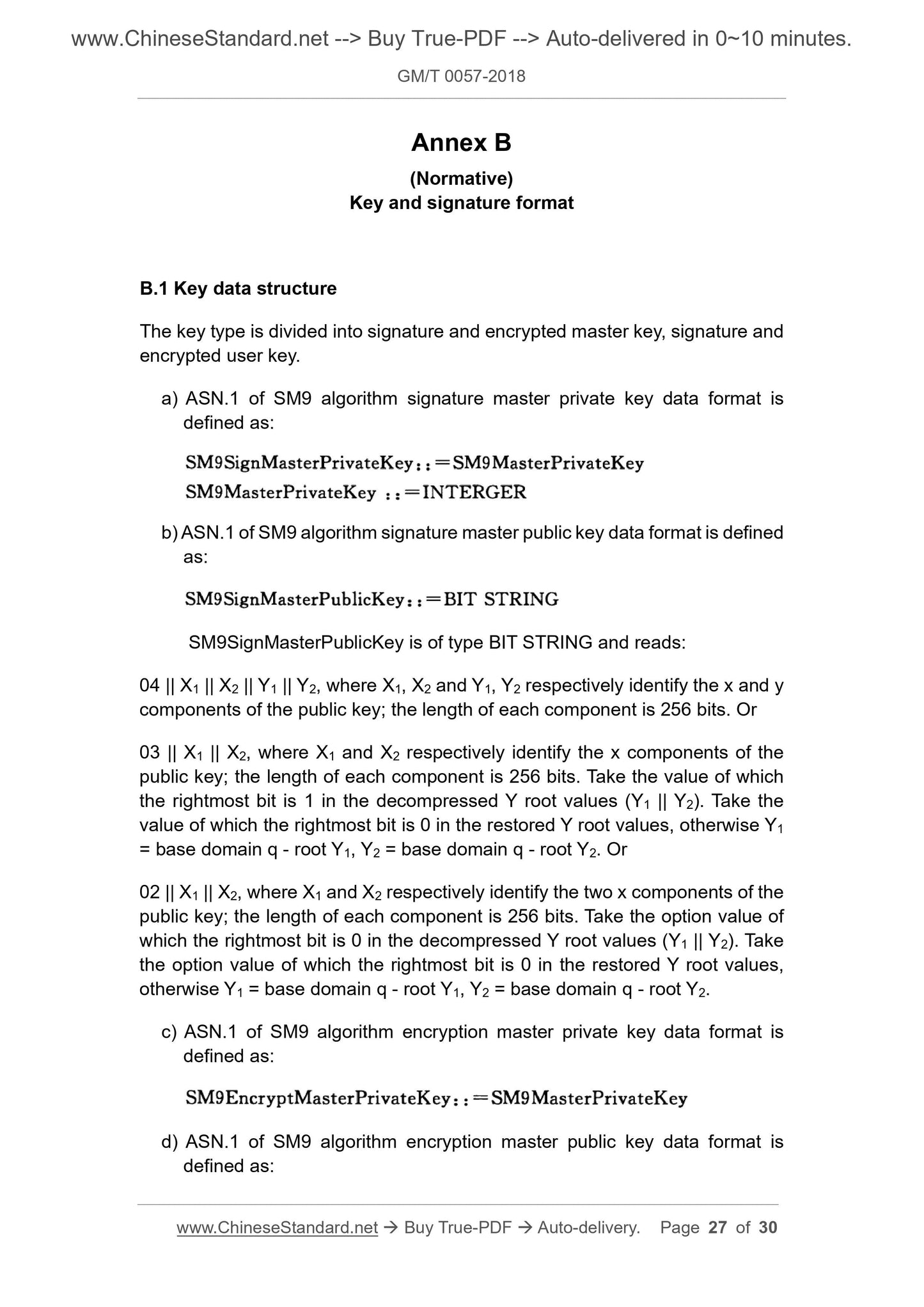1
/
of
11
www.ChineseStandard.us -- Field Test Asia Pte. Ltd.
GM/T 0057-2018 English PDF (GM/T0057-2018)
GM/T 0057-2018 English PDF (GM/T0057-2018)
Regular price
$270.00
Regular price
Sale price
$270.00
Unit price
/
per
Shipping calculated at checkout.
Couldn't load pickup availability
GM/T 0057-2018: Identity authentication specifications based on IBC technology
Delivery: 9 seconds. Download (and Email) true-PDF + Invoice.Get Quotation: Click GM/T 0057-2018 (Self-service in 1-minute)
Newer / historical versions: GM/T 0057-2018
Preview True-PDF
Scope
This Standard specifies the requirements for identity authentication usingidentity-based cryptography technology.
This Standard applies to the field of identity authentication using identity-based
cryptography technology.
Basic Data
| Standard ID | GM/T 0057-2018 (GM/T0057-2018) |
| Description (Translated English) | Identity authentication specifications based on IBC technology |
| Sector / Industry | Chinese Industry Standard (Recommended) |
| Classification of Chinese Standard | L80 |
| Word Count Estimation | 22,212 |
| Date of Issue | 2018-05-02 |
| Date of Implementation | 2018-05-02 |
| Issuing agency(ies) | State Administration of Cryptography |
Share
